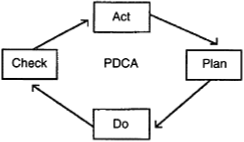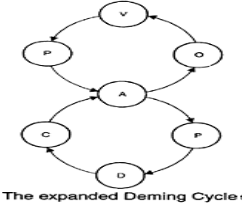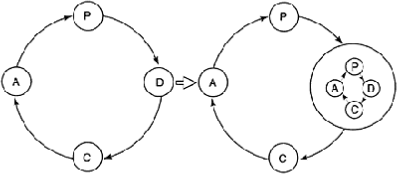Quality Culture, Quality Improvement And Tqm
Introduction:
Deming cycle has become the basic work method for quality improvement. Culture has to be realized for quality and productivity within a given system. A successful implementation requires that the total concept is understood, accepted and utilized in every customer-supplier relationship all over the company.
The Deming cycle:


- Culture has to be realized for quality and productivity within a given system. It is therefore relevant to supplement the Deming cycle with a culture side which continuously incorporates organizational values into the management of quality. This can be done superimposing the culture cycle on the Deming cycle to create an expanded Deming cycle.
- The two cycles are connected in the action field and the Deming cycle is still the basic work method. In certain cases, however, the check activity will show so large a discrepancy that it is found necessary to consider a change in the culture and attitudes of the company.
The result of this was a new definition of quality incorporated into an entirely new corporate philosophy: ‘Our first commitment is to customer satisfaction. Through diligent efforts to develop new customers and expand our customer’s base, we are contributing to the ongoing progress and enrichment of society/ This philosophy was communicated to the workforce in different ways.
- The expanded Deming cycle demonstrates an important distinction between traditional quality assurances and TQM.
- While QA usually operates within a given system framework, TQM operates on all levels of the company including the attitudinal. It is, however, not a total TQM cycle.
The transfer of Deming’s cycle to the ‘do’ level

- One of the important characteristics of TQM is the internal supplier customer relationship.
- Each employee in the company has many suppliers and many customers and each has to be treated as if he or she were an external supplier or an external customer.
- Each employee knows the quality levels of the suppliers and the demands from the customers and he/she is continually trying to improve the quality of output in order to decrease the hidden factory and to increase customers’ satisfaction.
- Such a successful implementation needs time and resources and many companies will never reach that level.